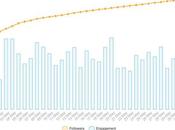MILANO, 13 gennaio (Reuters)
(The following statement was released by the rating agency)
– We are lowering our unsolicited long-term rating on Italy by two notches to ‘BBB+’ from ‘A’ and the short-term rating to ‘A-2′ from ‘A-1′.
– The downgrade reflects what we view as Italy’s increasing vulnerabilities to external financing risks and the negative implications these could have for economic growth and hence public finances. We believe the external financingrisks are exacerbated by deepening political, financial, and monetary problems within the eurozone.
– The outlook on the long-term rating is negative.
Jan 13 – Standard & Poor’s Ratings Services said today that it lowered its unsolicited long-term sovereign credit ratings on the Republic of Italy to ‘BBB+’ from ‘A’. At the same time, we lowered the unsolicited short-term sovereign credit rating to ‘A-2′ from ‘A-1′. We also removed the ratings from CreditWatch with negative implications, where they were placed on Dec. 5, 2011. The outlook on the long-term rating is negative.
Our transfer and convertibility (T&C) assessment for Italy, as for all European Economic and Monetary Union (eurozone)members, is ‘AAA’, reflecting Standard & Poor’s view that the likelihood of the European Central Bank restricting non-sovereign access to foreign currency needed for debt service is extremely low. This reflects the full and open access toforeign currency that holders of euro currently enjoy and which we expect to remain the case in the foreseeable future.
The downgrade reflects what we see as Italy’s increasing vulnerabilities to external financing risks, given thehigh foreign ownership of its government and financial sector debt. It is our view that deepening political, financial, and monetary problems within the eurozone are exacerbating the external funding constraints on the Italian public andprivate sectors.
The downgrade of Italy’s ratings reflects our view that the country’s external financing costs have risen markedly and may remain elevated for an extended period of time amid a reduction in cross-border financing ofItalian banks and the government. We expect that a difficult external financing environment will have negative implications for growth performance and hence public finances. Looking at BIS data, we note a marked and sustained decline inforeign banks’ claims on Italian borrowers; this represents a risk to the sustainability of Italy’s balance of payments, in our view, as it could reduce Italian borrowers’ capacity to roll over their debt at low interest rates acceptable to the borrowers. Consequently we have lowered our external liquidity score for Italy (one of the five key factors in our published sovereign ratings criteria).
The lower external score also reflects our view of Italy’s substantial exposure to short-term external liabilities. Our calculations indicate that the ratio of total short-term external debt by remaining maturity exceeds 100% of current account receipts. We view current account receipts as an appropriatemeasure of an economy’s foreign currency generating capacity. In our view, higher interest payments to non-resident creditors in turn will require increased domestic savings or lower investment in order to stabilize Italy’s external debtnet of liquid assets, which we estimate at 240% of current account receipts at Dec. 31, 2011.
During 2012 and 2013, we expect the Italian Treasury will likely either pay historically high yields at longer maturities or issue debt atlower maturities to take advantage of the recent steepening of the yield curve. Over time, the latter option would, in our opinion, diminish one of Italy’s important credit strengths: the relatively long average maturity of its debt stock of over seven years, a phenomenon that slows the impact of rising yields on the Italian government’s budgetary performance.
The outcomes from the EU summit on Dec. 9, 2011, and subsequent statements from policymakers lead us tobelieve that the agreement reached has not produced a breakthrough of sufficient size and scope to fully address the eurozone’s financial problems. In our opinion, the political agreement does not supply sufficient additional resources oroperational flexibility to bolster European rescue operations, or extend enough support for those eurozone sovereigns subjected to heightened market pressures.
We also believe that the agreement is predicated on only a partial recognition of the source of the crisis: that the current financial turmoil stems primarily from fiscal profligacy at the periphery of the eurozone. In our view, however, the financial problems facing the eurozone are as much a consequence of rising external imbalances and divergences in competitiveness between the eurozone’s core and the so-called “periphery”. As such, we believe that a reform process based on a pillar of fiscal austerity alone risks becomingself-defeating, as domestic demand falls in line with consumers’ rising concerns about job security and disposable incomes, eroding national tax revenues.
In our view, the effectiveness, stability, and predictability of European policymaking and political institutions (with which Italy is closely integrated) have not been as strong as we believe are called for by the severity of a broadening and deepening financial crisis in the eurozone. Nevertheless, we have notchanged our political risk score for Italy (one of the five key factors in our published sovereign ratings criteria). We believe that the weakening policy environment at European level is to a certain degree offset by a stronger domesticItalian capacity to formulate and implement crisis-mitigating economic policies. This reflects our view of the improved policy environment under the recently inaugurated technocratic government headed by Mario Monti, and our expectationthat extensive growth-enhancing measures will be implemented during the first half of 2012.
We believe that plans to deregulate the labor market, including closed professions, could help to restore Italian competitiveness, potentially enabling Italy to operate steady current account surpluses in a shift that could strengthen Italy’s creditworthiness. Nevertheless, we expect that there could be opposition to some of the current government’s ambitious reforms. This,we believe, increases the uncertainty surrounding the outlook for growth and hence public finances, in the context of a more challenging funding environment for Italian banks and the Italian government.
Italy’s ratings are alsoconstrained by what we see as the country’s very high public sector debt and weak economic growth potential. The ratings are supported by our view of Italy’s wealthy and diversified economy, expected primary fiscal surpluses, and sizableprivate sector savings.
The outlook on the long-term rating on Italy is negative, indicating that we believe there is at least a one-in-three chance that the rating will be lowered again in 2012 or 2013. According to our criteria, wecould lower the ratings if a weaker-than-expected macroeconomic environment and deflationary pressures: reduce Italy’s per capita GDP; result in Italy’s net general government debt ratio continuing its upward trajectory; or lead to what we would consider a prolonged worsening of financing conditions. We could also lower the ratings if we see that the technocratic administration fails to implement structural reform measures that we believe are necessary to boost growth potential, whether due to opposition from special interest groups and other incumbents or if thenew government’s term is cut short before its mandate is fulfilled.
Conversely, we expect that the ratings could stabilize at the current level if structural reforms are fully implemented and shift the Italian economy to a higherlevel of growth, or if we see that other measures–such as significant asset sales and privatizations–are taken to substantially reduce the public sector debt burden.
Primary Credit Analysts: Frank Gill, London (44)20-7176-7129;
[email protected]






